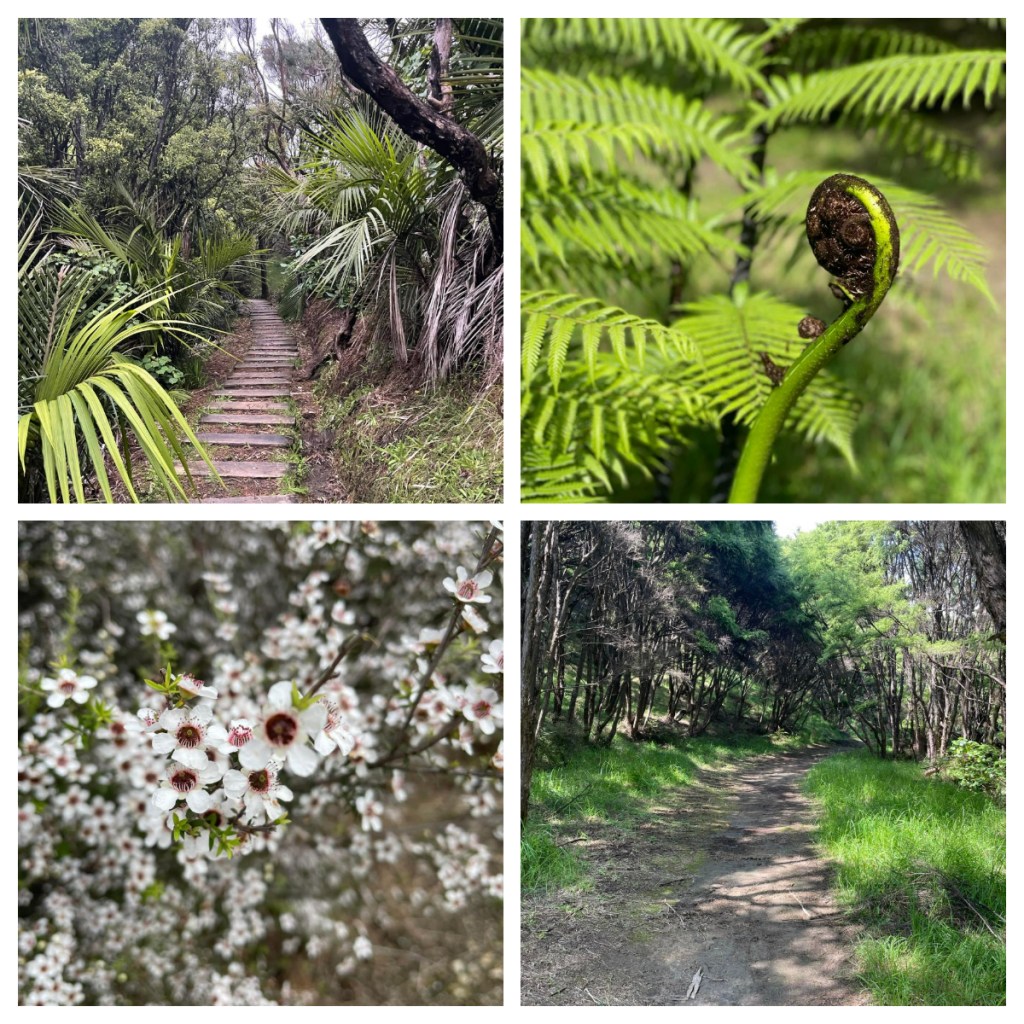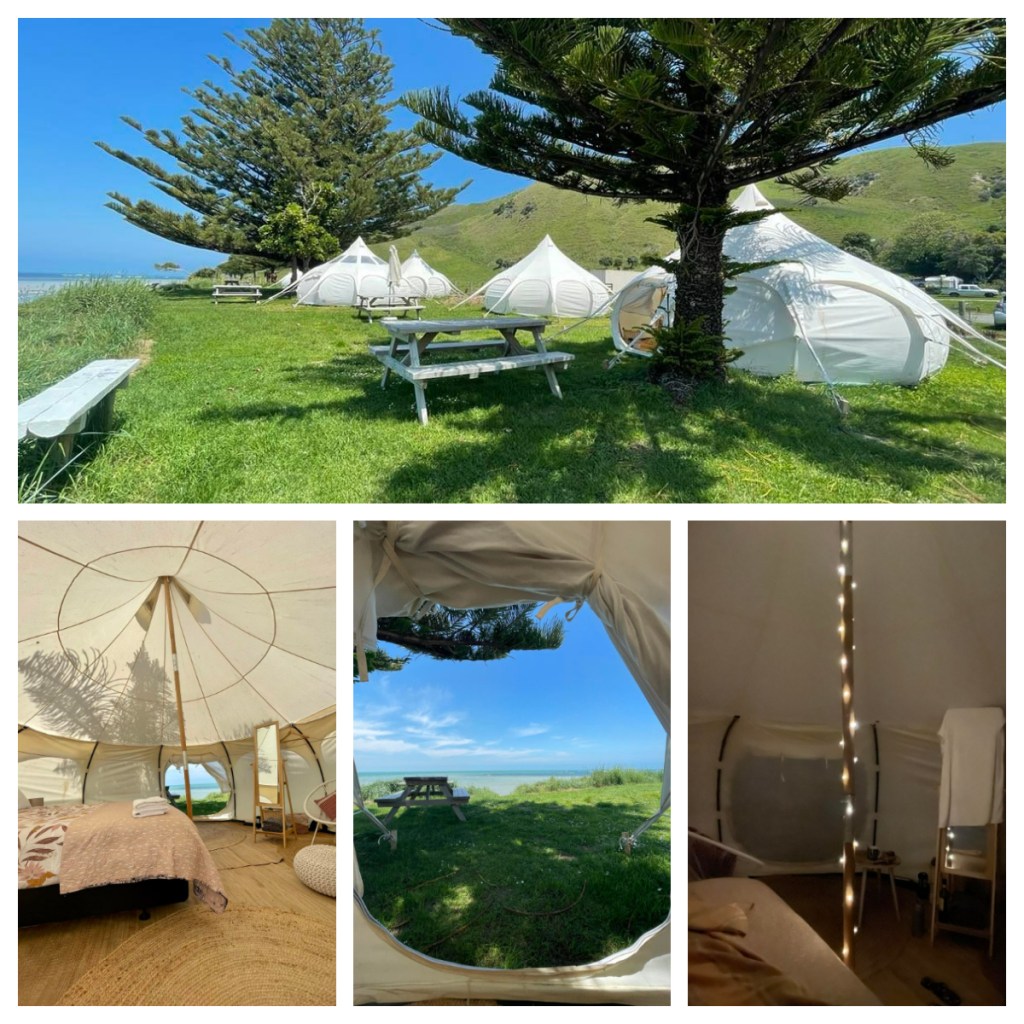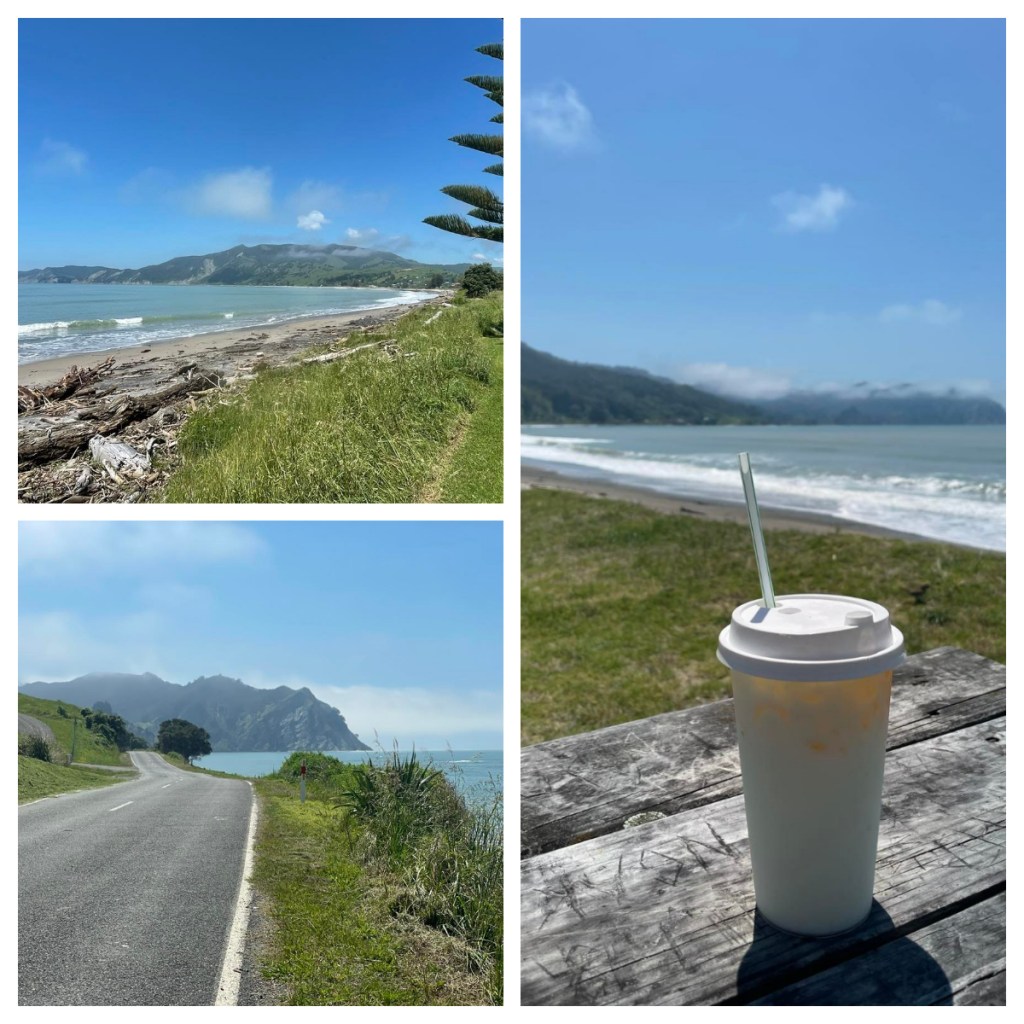November 2021
I had decided not to try for sunrise this morning and it was the right choice as I woke up to another overcast morning. I only had a short drive today and I had such a comfortable bed, with the forecast had shown it would not clear up till around 10am, I went back to bed!
I thought fuel on Te Araroa was expensive, in Tolaga Bay it was $2.68 per litre – another 20c more than in Te Araroa. Thank goodness I did not wait for here to fill up. (It is odd writing this just a few short months later and fuel prices are pushing $3 per litre all over the country, in some places more!)
Before starting my short drive, I had decided to do one of the walks in the area – the Cooks Cove Walkway. Not surprisingly, it was named after the Cove that Captain Cook visited in 1769 as part of his circumnavigation of New Zealand on the Endeavour. There were some great information panels at the beginning of the track, telling about both the Māori and European history of the area.
Unfortunately, the track started with more stairs!!! I was definitely over stairs after the walk to the lighthouse the day before … thankfully they did not last too long and I was soon walking through open farmland. (It is worth noting that some of the walk is through private farmlands and is closed from August through to October to allow for the lambing season.)

A short way into the track there was a lovely view over Tolaga Bay and a memorial called “Te Pourewa” or “The Beacon of Light” (apparently it is lit up at night). The sculpture is 12 metres high and commemorates Tupaia, the Tahitian navigator and priest who arrived in Cooks Cove (Opoutama) in 1769 on the Endeavour with Capitan Cook.
From here the walk took me through the farmlands, passing a family of wild (well, I assume they were wild) turkey and into regenerating bush. As on Whale Island a few days before, there was so many Kanuka plants in flower, and the bees filled the air with the buzzing. What with them and the singing birds, I was glad I had forgotten my headphones. Some of the grassy areas were pretty boggy/muddy and with the track not being very well worn, it was sometimes hard to find the route – I had to search in the distance for that yellow marker pole.
Back in the bush and there were a lot more stairs as I worked my way down towards the cove (but not before a stop at a look out, giving a beautiful view of the cove below)– it did not look forward going up all the stairs on the way back. 🤦🏻♀️



The first point of interest was a “Hole in the Wall” or “Te Kotare-o-te-whenua”. Someone even erected a lovely photo frame to ensure you got the just the right shot. Joseph Banks, the Botanist on the Endeavour back in 1769 even wrote about it. He said “In pursuing a valley bounded on each side by steep hills we saw also an extraordinary natural curiosity … a most noble arch or Cavern through the face of a rock leading directly to the sea.” He went on to describe it as the “most magnificent surprise”. Clearly he had spent a long time at sea lol.
There was a small track down the side of the “hole” so if the time is right, you can walk right through it.
From the hole, the last stretch of the track was across open farm land dotted with sheep and was very wet under foot.
Did you know, Cooks Cove is one of the few examples in New Zealand of an archaeological site that spans the full duration of human occupation. I didn’t! The local iwi (Te Aitanga Hauiti) used the area to fish and gather shellfish as well as grow crops. The stories of the arrival of Cook and the Endeavour were passed down through generations, particularly about Tupaia, the Tahitian chief who was on the ship. Children were even named after him. And of course 100’s of years later a monument was erected in his honour at the top of the hill.
By this time, the cloud had mostly cleared but it was still not sunny so I didn’t stick around too long. Partly because it was to wet to sit down anyway and partly because I was cleared disturbing today’s local inhabitants – Canadian guess and oyster catchers!
I almost missed a signpost that directed me up another hill to a historic monument (to a place where Cook and his crew gathered wood, water and collected plants) and great view over the cove. I was intrigued by a pond covered in crazy red algae but still have no idea what it was!


I was the only person around and I was enjoying the peace, broken only by the local wildlife including bees, Fantails, Tui and a noisy white faced heron landing on its nearby nest.
Just as I was about to start on the track back, the sun came out, so I turned around and walked back up the hill 🤦🏻♀️… and that is why I end up walking 1 km more than the track actually is 😂(the actual track is about 5.8KM). With the sun out, the walk back was much warmer, I was actually glad I had started in the cloud.

Unfortunately the local food truck (recommended on all the websites) was closed so before leaving Tolaga Bay I stopped back in the town to search again for food. This time I was more successful and I found “Off the Grid” cafe a small caravan with a great selection. I grabbed an iced coffee and a sandwich (yay) and headed back to the beach by the wharf to eat.
My drive today was only 35 minutes and I took a short detour to Whāngārā. Legend has it, the great voyager Paikea arrived here after traveling across the ocean from Hawaiki on the back of the whale. If you think this story sounds familiar, it may be because this is the basis of the 2002 movie The Whale Rider. And, Whāngārā was the location of much of the filming.
The small township was on a private road so I could not get very close, but it looked beautiful, right on the waterfront and I could see the image of Paikea on his whale on top of the Marae.

My accommodation at Tatapouri Bay was the one I was looking forward to the most on my trip – a glamping tent, right in the water’s edge. I wasn’t disappointed as the tent and the view were beautiful.
Before the day was over, I had one more fun thing planned – a reef ecology tour with Dive Tatapouri. I was the only person booked on the tour that afternoon (tour times are based on the tides) which was great (for me, probably not so much for team) so it was quick and easy to get kitted up in waders and with a stick (to help balance yourself as you wade out in the shallows) before heading out into on to the seabed in the shallow water.
It didn’t take long before the rays started arriving – we were visited by 3 eagle rays and 3 short tailed rays of various sizes, and the guide knew them all by their size and behaviour and had names for them all. I am always concerned with things like this, where wild animals are fed to attract them to interact with people.


I asked my guide about this, and he told me that they only feed them small amounts and they don’t believe it is enough to impact their natural feeding behaviour. He certainly seemed passionate about them, and they also seemed to enjoy it. A couple of them behaving rather like dogs or cats, rubbing around our legs. And of course, they can come and go as they please.
It was a unique way to spend an hour and learn a little about our beautiful wildlife.
Back at the campground, as if the tent could not get any better, I discovered it had fairy lights around the central pole 👍🏻👍🏻👍🏻. I loved it and had a great night’s sleep listening to the ocean on my doorstep.













